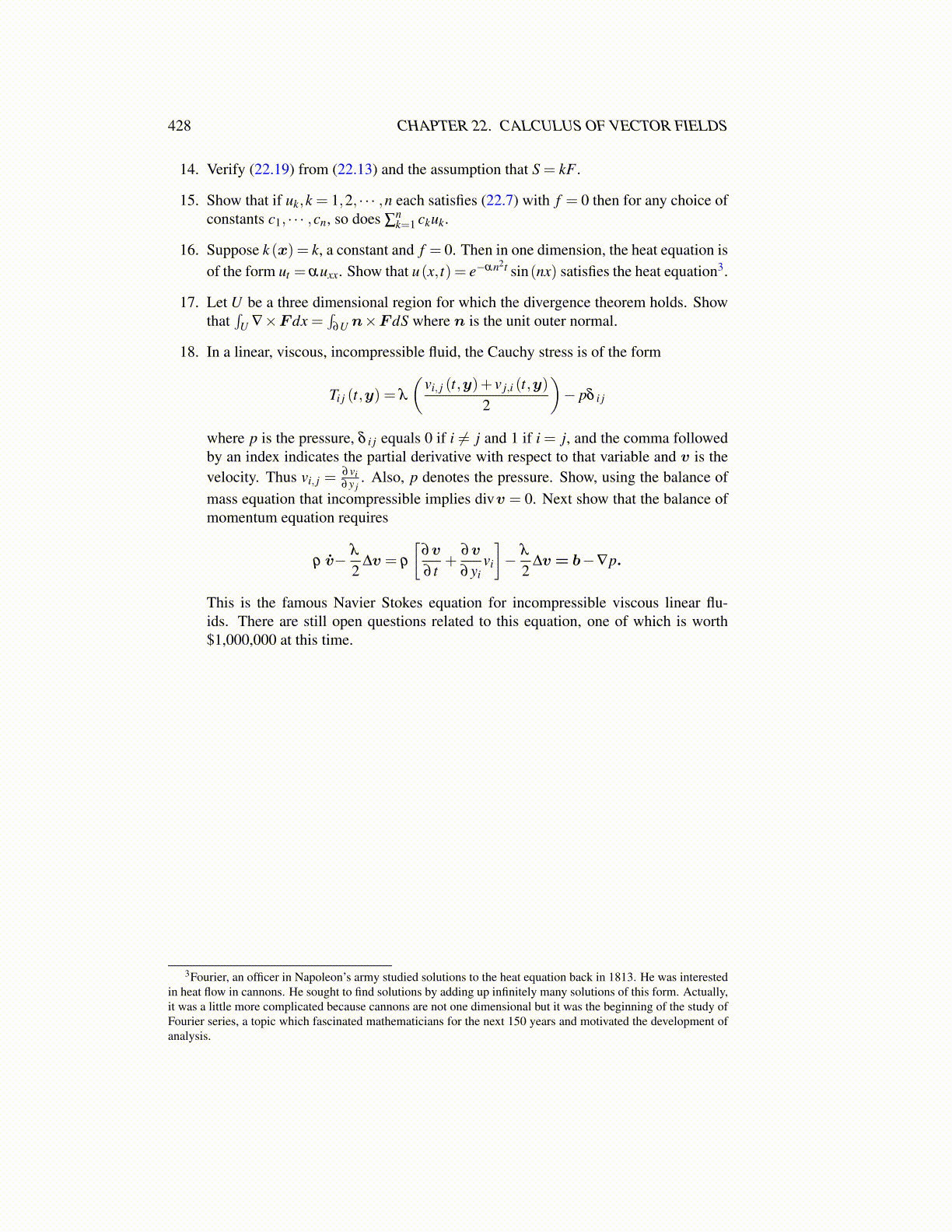
428 CHAPTER 22. CALCULUS OF VECTOR FIELDS
14. Verify (22.19) from (22.13) and the assumption that S = kF .
15. Show that if uk,k = 1,2, · · · ,n each satisfies (22.7) with f = 0 then for any choice ofconstants c1, · · · ,cn, so does ∑
nk=1 ckuk.
16. Suppose k (x) = k, a constant and f = 0. Then in one dimension, the heat equation isof the form ut = αuxx. Show that u(x, t) = e−αn2t sin(nx) satisfies the heat equation3.
17. Let U be a three dimensional region for which the divergence theorem holds. Showthat
∫U ∇×F dx =
∫∂U n×F dS where n is the unit outer normal.
18. In a linear, viscous, incompressible fluid, the Cauchy stress is of the form
Ti j (t,y) = λ
(vi, j (t,y)+ v j,i (t,y)
2
)− pδ i j
where p is the pressure, δ i j equals 0 if i ̸= j and 1 if i = j, and the comma followedby an index indicates the partial derivative with respect to that variable and v is thevelocity. Thus vi, j =
∂vi∂y j
. Also, p denotes the pressure. Show, using the balance ofmass equation that incompressible implies divv = 0. Next show that the balance ofmomentum equation requires
ρ v̇− λ
2∆v = ρ
[∂v
∂ t+
∂v
∂yivi
]− λ
2∆v = b−∇p.
This is the famous Navier Stokes equation for incompressible viscous linear flu-ids. There are still open questions related to this equation, one of which is worth$1,000,000 at this time.
3Fourier, an officer in Napoleon’s army studied solutions to the heat equation back in 1813. He was interestedin heat flow in cannons. He sought to find solutions by adding up infinitely many solutions of this form. Actually,it was a little more complicated because cannons are not one dimensional but it was the beginning of the study ofFourier series, a topic which fascinated mathematicians for the next 150 years and motivated the development ofanalysis.